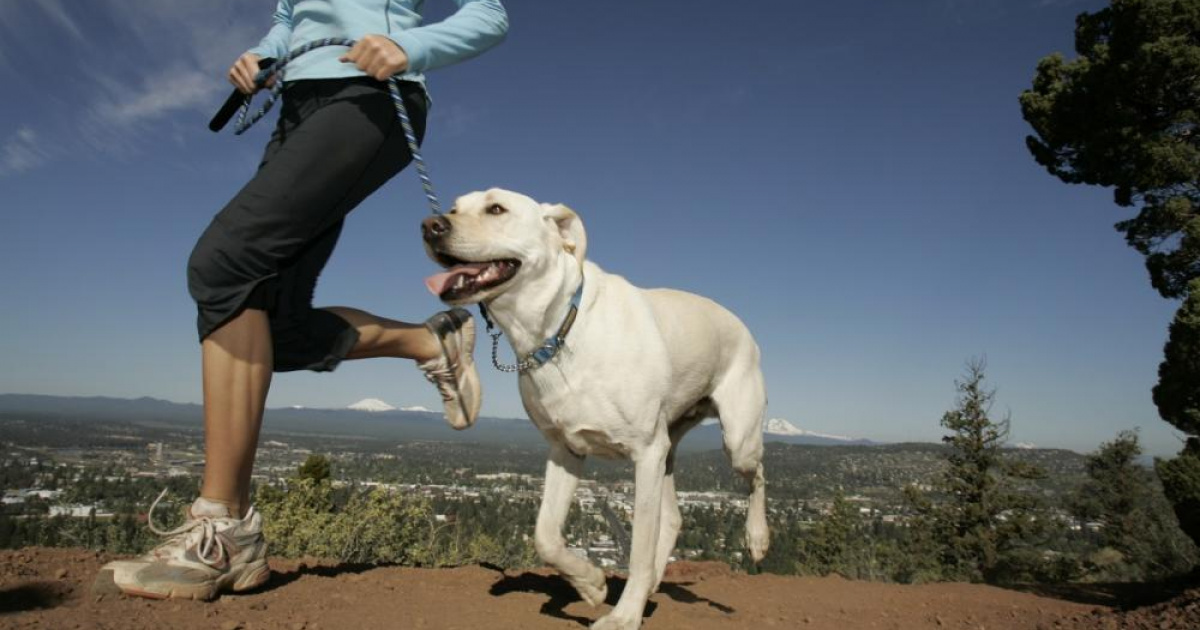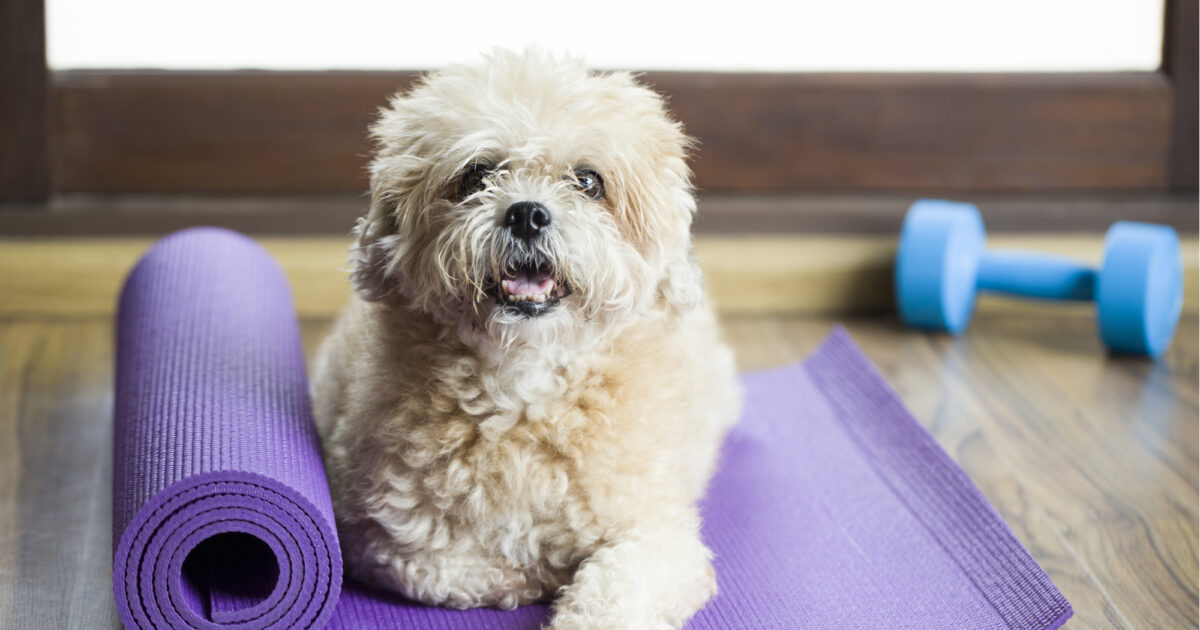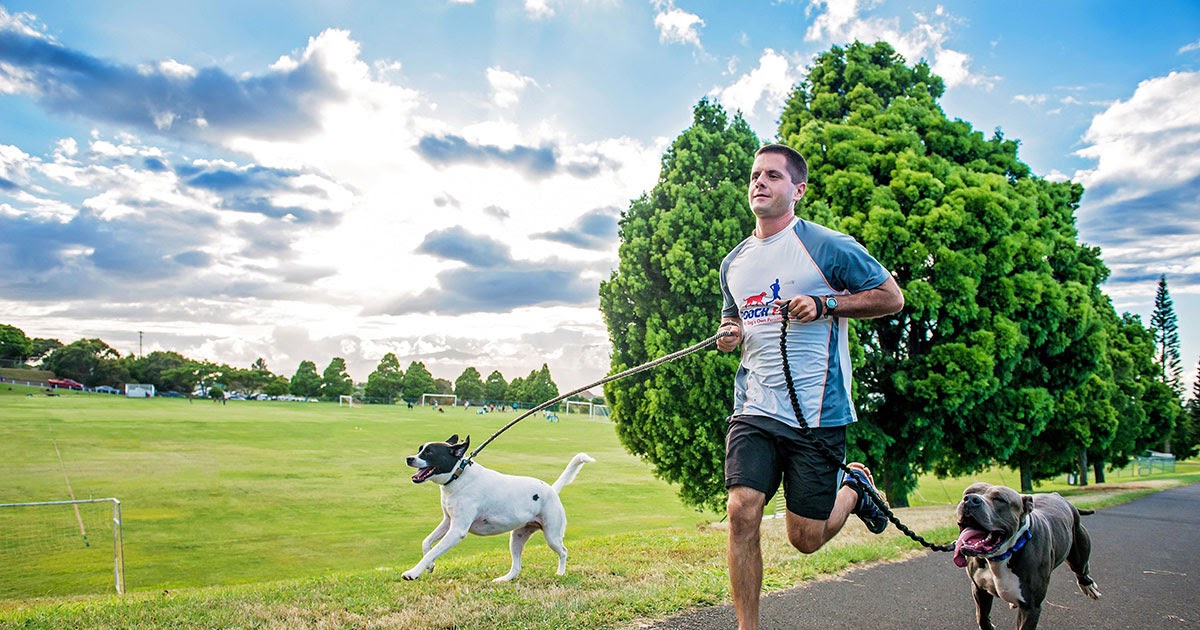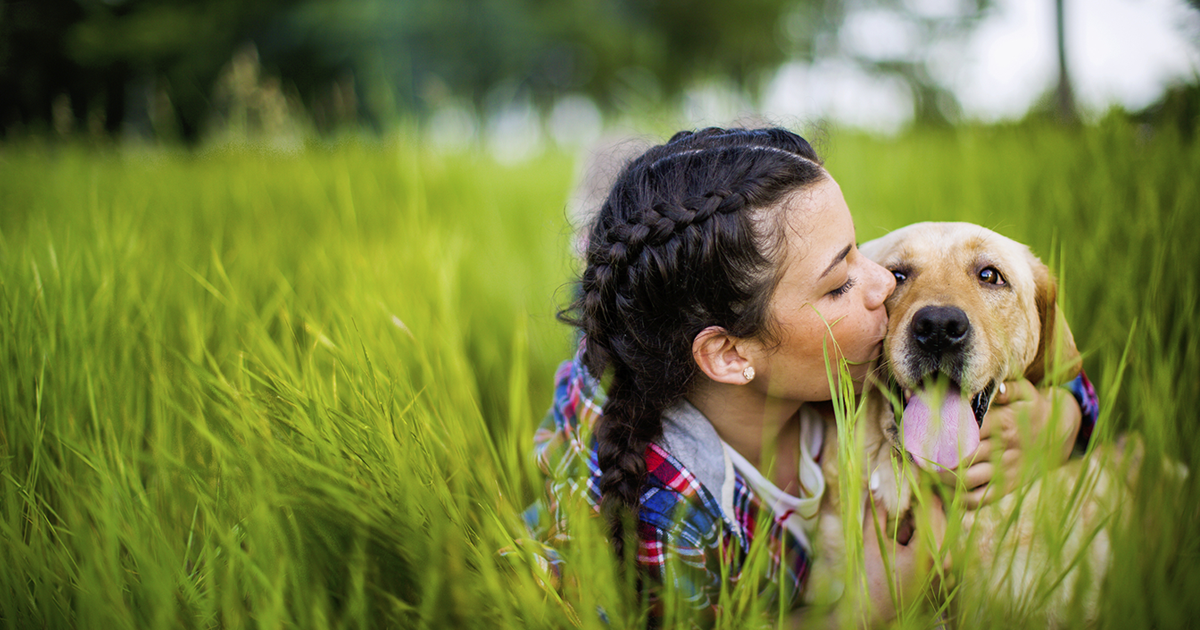The Importance of Exercise for Happy and Healthy Pets
When it comes to our beloved Pets, ensuring their well-being is a top priority. One integral aspect of pet care often overlooked is exercise. In this comprehensive guide, we’ll delve into the crucial role that exercise plays in your pet’s health and happiness.
Benefits of Exercise for Pets

Physical Health Benefits
Maintaining a Healthy Weight
Maintaining an ideal weight is as vital for pets as it is for humans. Regular exercise helps prevent obesity, reducing the risk of various health issues, including diabetes and joint problems. Keeping those extra pounds at bay contributes to a longer, healthier life for your furry friend.
Improved Cardiovascular Health
Just like in humans, exercise gets the heart pumping in our pets. This leads to improved circulation, reducing the risk of heart disease and ensuring that all those vital organs receive the oxygen they need to function optimally.
Stronger Muscles and Joints
Exercise helps build and maintain muscle mass, which is crucial for your pet’s strength and mobility. Strong muscles also provide better joint support, reducing the risk of injuries or conditions like arthritis.
Enhanced Flexibility
Flexibility isn’t just for yoga enthusiasts; it’s essential for pets too. Regular stretching through exercise keeps your pet limber, making it easier for them to move comfortably and enjoy an active life.
Mental Health Benefits
Stress Reduction
Pets experience stress too, and exercise is a fantastic stress-reliever for them. Physical activity triggers the release of endorphins, those feel-good hormones, which can help your pet stay calm and content.
Mental Stimulation
Exercise isn’t just about the body; it’s also a workout for the mind. Engaging in different activities challenges your pet’s cognitive abilities, helping to stave off boredom and keep them mentally sharp.
Behavioral Improvement
Many behavioral issues in pets are linked to excess energy. Regular exercise helps channel that energy positively, reducing undesirable behaviors like chewing or excessive barking.
Reduced Anxiety and Depression
Just as in humans, exercise can alleviate symptoms of anxiety and depression in pets. It provides a routine, a sense of accomplishment, and an opportunity for social interaction, all of which contribute to a happier, healthier pet.
Understanding Your Pet’s Exercise Needs

Breed-Specific Exercise Requirements
Different breeds have different exercise needs. Some, like Border Collies, thrive on high-intensity workouts, while others, like Bulldogs, prefer a more relaxed pace. Understanding your pet’s breed-specific requirements is essential to provide the right amount and type of exercise.
Age-Related Exercise Considerations
Pets’ exercise needs change with age. Puppies and young pets have boundless energy, but they also require proper guidance to prevent overexertion. Older pets may need gentler, low-impact exercise to keep their joints healthy.
Tailoring Exercise Routines to Your Pet’s Needs
Every pet is unique. Tailor their exercise routine to their individual needs, considering factors like energy levels, health conditions, and temperament. A personalized approach ensures that your pet gets the most benefit without undue strain.
Signs of Overexercising or Underexercising
It’s essential to recognize the signs that your pet may be overexerting or not getting enough exercise. Symptoms of overexertion can include excessive panting, lameness, or disinterest in activities. On the other hand, underexercised pets may exhibit restlessness, excessive barking, or weight gain.
Types of Pet Exercise

Outdoor Activities
Walking
A simple walk around the block is an excellent exercise for most dogs. It provides mental stimulation and a chance for your pet to explore their surroundings, making it a favorite daily activity.
Running and Jogging
For more active breeds, running or jogging is an ideal way to burn off energy. It’s not only great exercise but also an excellent bonding opportunity for you and your pet.
Hiking
If you enjoy the great outdoors, hiking with your pet can be a fantastic adventure. It provides a unique sensory experience for them, with new scents and sights at every turn.
Fetch and Playtime at the Park
Fetching a ball or frisbee in the park combines exercise with play, and it’s a blast for your pet. Off-leash play also allows for socialization with other dogs, which is beneficial for their overall well-being.
Indoor Activities
Interactive Toys
Interactive toys challenge your pet’s problem-solving skills and keep them mentally engaged. Puzzle feeders and treat-dispensing toys are excellent choices.
Puzzle Feeders
These clever devices make your pet work for their food, turning mealtime into a mentally stimulating activity.
Laser Pointers
Cats, in particular, love to chase that elusive laser dot. It’s a fun way to keep them active indoors.
Treadmills and Agility Courses
For some pets, treadmills can provide an indoor workout option. Agility courses, while requiring more space and setup, are fantastic for improving agility and coordination.
Incorporating Exercise into Daily Life
Scheduling Regular Exercise Sessions
Consistency is key to reaping the benefits of exercise. Set a schedule that works for both you and your pet, ensuring they get their daily dose of activity.
Creating a Pet-Friendly Environment
Make your home conducive to exercise. Clear obstacles, provide space for play, and ensure your pet has access to toys and activities that encourage movement.
Exercise as Bonding Time
Exercise isn’t just about physical health; it’s also an opportunity to strengthen your bond with your pet. Engaging in activities together fosters trust and companionship.
Mixing Exercise with Training
Incorporate exercise into your pet’s training regimen. Commands like “sit” and “stay” can be integrated into games of fetch or agility courses, making exercise fun and educational.
Common Challenges in Keeping Pets Active

Busy Lifestyles and Time Constraints
We all lead busy lives, but making time for your pet’s exercise is essential. Consider it an investment in their health and happiness, and find creative ways to incorporate it into your routine.
Weather-Related Challenges
Weather can pose challenges, but don’t let rain or snow deter you. Indoor activities, like puzzle toys or training sessions, can keep your pet active when outdoor exercise isn’t feasible.
Dealing with Apartment Living
Living in an apartment doesn’t mean your pet can’t exercise. Explore nearby parks or consider indoor activities like agility courses or interactive toys.
Senior Pet Exercise Considerations
As pets age, their exercise needs change. Be mindful of their limitations, provide low-impact activities, and consult with your vet for tailored exercise recommendations.
Overcoming Exercise Hurdles

Setting Realistic Goals
Establish achievable exercise goals for your pet, considering their age, breed, and health status. Gradually increase intensity and duration as their fitness improves.
Finding Motivation
Stay motivated by making exercise enjoyable for both you and your pet. Celebrate small victories and use positive reinforcement to keep them engaged.
Enlisting the Help of Professionals
If you’re unsure about the best exercise routine for your pet, consult with a veterinarian or professional trainer. They can provide expert guidance tailored to your pet’s unique needs.
Creating a Support Network
Share your pet’s exercise journey with friends and fellow pet owners. A support network can provide encouragement, share tips, and keep you accountable.
Safety First
Warm-Up and Cool-Down Routines
Just like in human exercise, warm-up and cool-down routines are crucial for preventing injuries. Start with a gentle warm-up, and end with a cool-down to help your pet’s muscles recover.
Pet-Friendly Gear and Equipment
Invest in appropriate gear, such as harnesses, leashes, or agility equipment, to ensure your pet’s safety during exercise.
Environmental Hazards to Be Aware Of
When exercising outdoors, be aware of potential hazards like poisonous plants or dangerous wildlife. Keep your pet away from busy roads or areas with potential risks.
Keeping Your Pet Hydrated and Nourished During Exercise
Hydration is key, especially in warm weather. Always carry water and a portable bowl when exercising outdoors, and provide post-exercise nourishment as needed.
Special Considerations for Different Pets
Dogs
Small Breeds
Small dogs may have high energy levels but may require less physical activity due to their size. Focus on activities that are appropriate for their stature and endurance.
Medium-Sized Breeds
Medium-sized dogs often have a balanced need for exercise. Tailor their routines to their breed’s tendencies, whether it’s running, playing, or a mix of activities.
Large Breeds
Large breeds, like Great Danes or Saint Bernards, have specific exercise requirements to maintain their health and avoid joint issues.
Working Dogs
Working breeds, such as Border Collies or German Shepherds, thrive on mentally and physically challenging exercises. Engage them in activities that stimulate both body and mind.
Cats
Indoor Cats
Indoor cats require extra attention to ensure they get enough exercise. Encourage play with toys, laser pointers, and interactive activities to mimic hunting behaviors.
Outdoor Cats
Outdoor cats have more opportunities for exercise through exploration and hunting. Ensure they have a safe outdoor environment and monitor their activities.
Small Mammals and Rodents
Small pets like rabbits, guinea pigs, or hamsters benefit from exercise wheels, tunnels, and supervised playtime outside their cages.
Birds
Birds, particularly parrots, need ample space to fly and exercise their wings. Provide toys, climbing structures, and opportunities for flight.
Reptiles
Reptiles have unique exercise requirements based on their species. Consult with a reptile specialist to create an appropriate exercise plan.
Monitoring and Measuring Progress
Keeping a Pet Exercise Journal
Track your pet’s exercise routine, noting the type, duration, and any changes in behavior or health. This journal can help you adjust the regimen as needed.
Tracking Weight and Body Condition
Regularly weigh and assess your pet’s body condition to ensure they are staying within a healthy weight range.
Behavioral Changes as Indicators
Monitor your pet’s behavior for signs of contentment and well-being. Increased playfulness, reduced anxiety, and improved sleep patterns can indicate a successful exercise routine.
Consultation with a Veterinarian
Consult your veterinarian for regular check-ups and to discuss your pet’s exercise plan. They can provide valuable insights and make adjustments based on your pet’s health.
Case Studies and Success Stories
Real-Life Examples of Pets Benefiting from Exercise
Explore stories of pets that have undergone remarkable transformations through the power of exercise. These real-life examples serve as inspiration and proof of the positive impact of an active lifestyle.
Inspiring Stories of Pet Owners Who Transformed Their Pets’ Lives Through Exercise
Hear from pet owners who have taken proactive steps to improve their pet’s health and happiness through exercise. Their experiences and dedication can motivate others to do the same.
Tips for Making Exercise Fun
Creative Ways to Engage Your Pet
Inject creativity into your pet’s exercise routines. Try new games, explore different terrains, and keep things exciting.
Incorporating Play into Exercise Routines
Play is a powerful motivator. Combine playfulness with exercise by using toys or games that both you and your pet enjoy.
Reward-Based Training and Positive Reinforcement
Positive reinforcement can make exercise enjoyable for your pet. Reward their efforts with treats, praise, or affection to reinforce good behavior.
Keeping It Interesting and Challenging
Regularly change up your pet’s exercise routine to prevent boredom. Introduce new activities, locations, or challenges to keep them engaged.
Beyond Physical Exercise – Mental Stimulation
The Importance of Mental Stimulation
Mental stimulation is just as crucial as physical exercise. Engage your pet’s mind with puzzles, games, and interactive activities to keep them sharp.
Brain-Training Games and Activities
Explore brain-training games designed to challenge your pet’s cognitive abilities. These activities can be both mentally and physically stimulating.
Puzzle Toys and Treat Dispensers
Puzzle toys and treat dispensers are excellent tools for mental stimulation. They require problem-solving skills and provide a rewarding payoff.
The Connection Between Mental and Physical Health
Recognize the symbiotic relationship between mental and physical health in pets. A well-exercised mind contributes to a healthy body and vice versa.
Conclusion
Summarizing the Key Takeaways
Recap the essential points highlighted throughout the article, emphasizing the importance of exercise in maintaining your pet’s health and happiness.
Reiterating the Importance of Exercise for Happy and Healthy Pets
Emphasize that exercise is not just a luxury but a necessity for your pet’s overall well-being. Encourage readers to prioritize their pet’s health through regular exercise.
Encouraging Readers to Prioritize Their Pets’ Well-Being Through Regular Exercise
End with a call to action, urging readers to implement the knowledge gained in this guide to provide their pets with a happy, healthy, and active life.
Encouraging Readers to Prioritize Their Pets’ Well-Being Through Regular Exercise
As we conclude this comprehensive guide on the importance of exercise for your furry companions, we want to leave you with a heartfelt reminder. Your pets rely on you for their physical and emotional well-being. By prioritizing their exercise needs, you’re not just enhancing their lives; you’re forging a deeper bond built on trust, joy, and shared adventures.
So, take the insights from this guide and put them into practice. Tailor your pet’s exercise routine to their unique needs, keeping both their physical and mental health in mind. Whether you have a rambunctious dog, a curious cat, a playful parrot, or any other furry, feathery, or scaly friend, exercise can be a transformative force in their life.
Remember, exercise is not a one-size-fits-all solution. It’s a journey of discovery that involves adapting, learning, and growing together with your pet. And as you embark on this journey, you’ll find that the rewards are immeasurable. A happier, healthier pet, a stronger bond, and a lifetime of cherished memories await you both.
So, seize the opportunity to enrich your pet’s life through exercise, and in doing so, you’ll be giving them the gift of a long, joyful, and vibrant existence by your side. Here’s to the happiness and health of your beloved pets!
FAQ: Exercise for Happy and Healthy Pets
How often should I exercise my dog, and for how long each time?
The frequency and duration of exercise depend on your dog’s breed, age, and health. In general, most dogs benefit from at least 30 minutes to 2 hours of exercise each day, but this can vary widely.
What are some signs that my pet might be overexercising or underexercising?
Signs of overexercising may include excessive panting, limping, or disinterest in activities. Underexercised pets may become restless, display destructive behavior, or gain weight.
Are there specific exercise routines suitable for indoor cats?
Yes, indoor cats can benefit from interactive toys, laser pointers, and vertical spaces for climbing and exploration. These activities mimic their natural hunting instincts.
What safety precautions should I take when exercising my pet outdoors?
Ensure your pet is on a leash in busy areas, watch out for environmental hazards like poisonous plants, and carry water to keep them hydrated. Protect them from extreme weather conditions as well.
Can exercise help manage behavior issues in pets, such as excessive barking or chewing?
Yes, exercise can help manage behavioral problems by channeling excess energy into positive activities. It provides mental stimulation and reduces boredom-related behaviors.
How can I motivate my pet to exercise when they seem uninterested or lazy?
Use toys, treats, or playtime with other pets to make exercise more engaging. Experiment with different activities to discover what piques their interest.
Are there any specific exercise considerations for senior pets?
Yes, senior pets may benefit from gentler, low-impact exercises like short walks or swimming to keep their joints healthy. Consult with your veterinarian for tailored exercise recommendations.
What is the connection between mental and physical health in pets, and how can exercise benefit both?
Mental and physical health are interconnected in pets. Exercise provides mental stimulation, reduces stress, and improves mood, all of which contribute to a pet’s overall well-being.
Are there any breed-specific exercise requirements I should be aware of?
Yes, different breeds have varying exercise needs. High-energy breeds like Border Collies require more intense exercise, while less active breeds may prefer gentler activities.
How can I ensure my pet stays safe during exercise, especially when using pet-friendly gear and equipment?
Always supervise your pet during exercise, check their gear for signs of wear, and ensure it’s the right size. Gradually introduce new equipment and activities to avoid injuries.
In our previous article on pet care, we discussed the significance of a balanced diet. Now, in this guide about the importance of exercise for happy and healthy pets, we will delve into another crucial aspect of pet well-being. Just like nutrition plays a vital role, exercise is equally essential. In fact, it complements a healthy diet in keeping your furry friend in top shape. To learn more about how these two pillars of pet care go hand in hand, read our article on Seasonal Care: Keeping Your Pet Healthy All Year Round.
For additional insights into maintaining your pet’s well-being, you can explore reputable sources in the field of pet care. A highly informative article on Medium, provides valuable tips and suggestions from experts in the industry. These tips can further enhance your understanding of how exercise contributes to your pet’s overall health and happiness.






